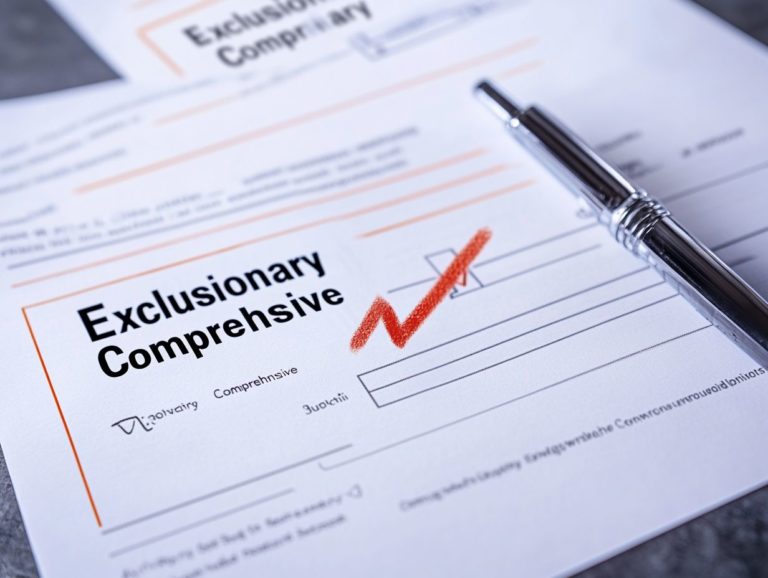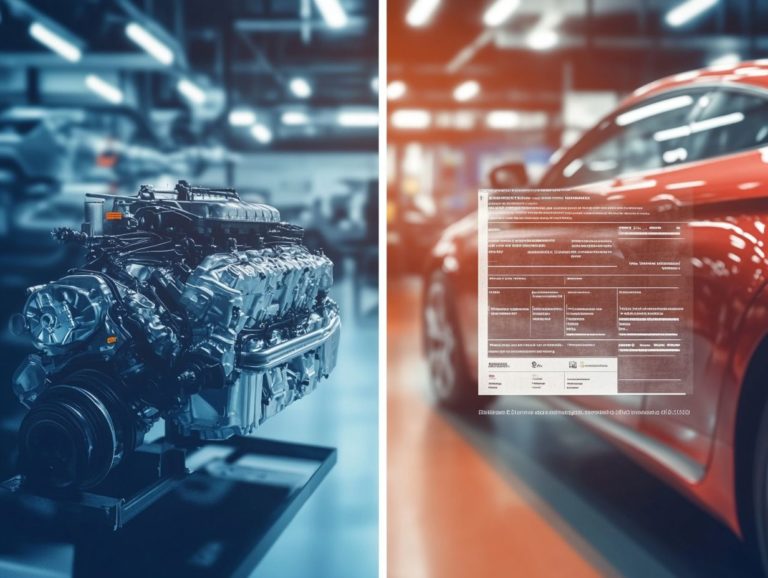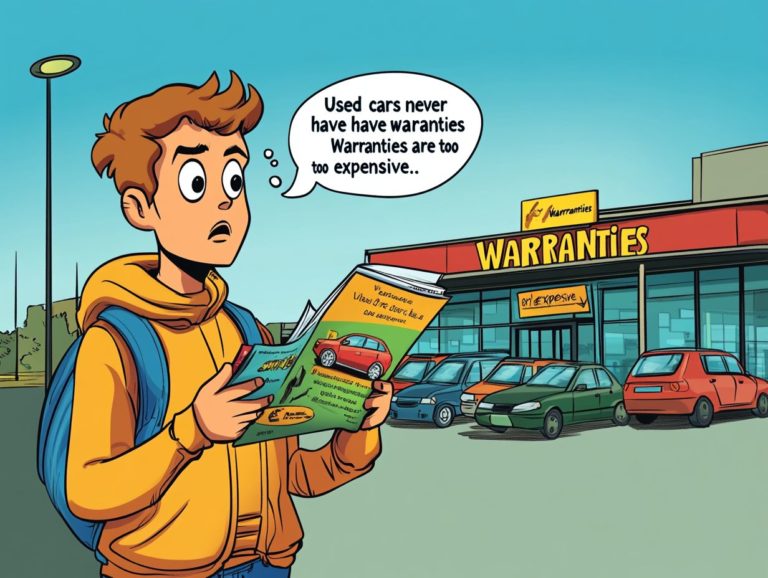Understanding Regional Differences in Warranty Coverage
Warranty coverage is essential for safeguarding your investments, whether it s a new appliance, vehicle, or electronic device. Understanding what s included can differ significantly based on your location.
This article delves into the definition and significance of warranty coverage. It also highlights the regional variances that may come into play and clarifies key terminology to enhance your understanding.
You will also find valuable tips on selecting the right warranty and maximizing your benefits, ensuring you truly get the most from your purchase.
Contents
- Key Takeaways:
- What is Warranty Coverage?
- Regional Differences in Warranty Coverage
- Understanding Warranty Terms and Conditions
- How to Choose the Right Warranty Coverage
- Maximizing Your Warranty Coverage
- Frequently Asked Questions
- What are ‘regional differences’ in warranties?
- How can I find out if my warranty is different in my region?
- What factors can cause regional differences in warranties?
- Do regional differences impact my product’s overall warranty?
- Can I negotiate regional differences in warranty coverage?
- What should I do if I have warranty issues due to regional differences?
Key Takeaways:

- Warranty coverage is a type of protection that guarantees repair or replacement of a product within a specified time frame. It is crucial to understand the coverage offered in different regions to make informed purchasing decisions.
- Factors such as laws, regulations, and market demand can influence the extent of warranty coverage offered in different regions. It’s essential to research and compare warranty terms to ensure the best coverage for your needs.
- To get the most out of your warranty coverage, you must carefully read and understand the terms and conditions, including key terminology and clauses. Consider factors like coverage duration, exclusions, and customer service when choosing the right warranty.
What is Warranty Coverage?
Warranty coverage represents the assurance provided by manufacturers or service providers against product defects or failures, granting you peace of mind during your purchasing decisions.
Grasping the intricacies of warranty coverage is crucial. It delineates the specific terms and conditions under which repairs or replacements will occur, including important details such as warranty limitations, exclusions, and the duration of the coverage.
It’s worth noting that this coverage can vary considerably based on the type of product, the manufacturer s specific warranty policies, and whether you opt for an extended warranty a type of warranty you can buy for additional protection or other forms of coverage.
Regional Differences in Warranty Coverage
Understanding these differences is crucial to securing the right warranty for your needs! Regional variations in warranty coverage can profoundly influence your consumer experience and protections. Different markets, including Europe, the United States, Latin America, and Asia-Pacific, are governed by distinct laws and regulations that shape what is offered in terms of warranty.
It s essential to grasp these differences to secure the adequate warranty information and support necessary when making your purchases.
Factors that Affect Warranty Coverage
Several factors influence your warranty coverage, including the type of product, specific warranty exclusions, deductible fees, and the exact conditions that define the extent of the protection available to you.
These elements are pivotal in shaping your experience as you navigate the sometimes complex landscape of product protection. For instance, understanding how warranty limitations can restrict your claims or recognizing exclusions due to misuse or failure to adhere to care instructions is essential.
As you interact with various manufacturers, you’ll quickly notice the differences in warranties. Some brands provide more comprehensive coverage than others. This variability can significantly impact your rights and expectations as a consumer, leaving you feeling either secure or uncertain about your investments.
Ultimately, staying informed about these factors enables you to make educated decisions that align with your specific needs and expectations.
Examples of Regional Differences

Examples of regional differences in warranty coverage are evident when comparing consumer protection laws in Europe with those in the United States. These differences greatly influence the information you receive about warranties and the level of support available to you.
In Europe, the Consumer Sales Directive ensures a minimum two-year warranty period for most goods. This provides you with robust protection, requiring manufacturers to repair or replace defective products at no cost. In stark contrast, many U.S. states allow warranties to last as little as one year, leaving you to shoulder the repair costs once that period expires.
A closer look at warranty claims reveals that nearly 65% of European consumers report satisfaction with their warranty experiences, compared to only 45% in the U.S. This highlights how these regional differences can significantly affect your experience and expectations as a consumer.
Understanding Warranty Terms and Conditions
Understanding your warranty rights and obligations is essential as a consumer. It allows you to grasp the details of your warranty agreement, including specific requirements for making claims and what is covered.
Key Terminology and Clauses
Key terminology and clauses are essential for you to grasp when navigating warranty terms. These include warranty statements, the warranty claims process, and specific clauses that outline coverage, exclusions, and limitations.
Understanding these terms is crucial for anyone looking to protect their purchase. For example, a warranty statement typically outlines the manufacturer s promises regarding the product’s performance and lifespan, which directly influences your consumer rights.
The warranty claims process is your pathway to seeking solutions or compensation when issues arise. Knowing this can help ensure a smoother resolution. Specific warranty clauses may detail what isn t covered, such as damages from misuse or natural wear and tear, clarifying the responsibilities of both parties involved.
Being aware of these terms enables you to make informed decisions and effectively exercise your rights when the need arises.
How to Choose the Right Warranty Coverage
Choosing the right warranty can make all the difference in protecting your investment and ensuring that your products are adequately safeguarded.
Whether you opt for a standard manufacturer’s warranty or an extended warranty that offers extra benefits, making an informed choice will provide you with peace of mind and effectively protect your purchase.
Factors to Consider

When selecting warranty coverage, consider several key factors. Evaluate your warranty rights, the conditions for product repair, and the warranty claims process, which determines how smoothly your claim can be handled.
It’s crucial for you to evaluate the specific conditions of the warranty, as these can vary widely among different providers. Also, assess the reputation of the warranty customer service; having a responsive and helpful team can significantly ease the claims process.
Don’t overlook these key factors they can save you from costly mistakes. Being aware of potential warranty disputes is essential, as understanding common pitfalls can help you avoid future headaches. These considerations are vital to ensuring that the warranty genuinely meets your needs and expectations.
Maximizing Your Warranty Coverage
Maximizing your warranty coverage requires a deep understanding of the warranty claims process. It s essential to know how to effectively leverage warranty support and ensure that manufacturers adhere to their warranty commitments through diligent enforcement.
By navigating this landscape with confidence, you can fully capitalize on the protections your warranty offers.
Tips for Getting the Most Out of Your Warranty
To maximize the benefits of your warranty, it s vital to establish realistic expectations and fully understand what is covered especially accidental harm and normal wear and tear.
Engaging actively with the warranty claims process is crucial. Tracking your warranty documentation can help streamline the claims process.
Familiarizing yourself with things not covered by the warranty helps you avoid misunderstandings and those unwelcome out-of-pocket expenses.
When you reach out to customer service for a claim or inquiry, clearly state your issue. Have relevant information like purchase dates and model numbers ready. Building rapport with customer service representatives fosters smoother resolutions and may unlock additional options for assistance you hadn t considered.
Frequently Asked Questions
What are ‘regional differences’ in warranties?

‘Regional differences’ in warranty coverage refer to variations in the terms and conditions based on geographic location. These can include different lengths of coverage and repairs covered.
How can I find out if my warranty is different in my region?
Check your warranty document or contact the manufacturer or seller about any regional differences. Review the warranty terms carefully, especially if you are purchasing a product in a different region.
What factors can cause regional differences in warranties?
Common factors include legal requirements, market demand, and local regulations. For instance, a product might have different warranty coverage in a country with stricter consumer protection laws.
Do regional differences impact my product’s overall warranty?
Yes, understanding these differences is crucial. They can affect what is covered under your warranty, depending on your location.
Can I negotiate regional differences in warranty coverage?
In some cases, yes! If buying a product in a different region, you might negotiate with the seller or manufacturer for adjusted coverage. However, this depends on the company’s policies.
What should I do if I have warranty issues due to regional differences?
If you encounter a warranty issue affected by regional differences, consult your warranty document or contact the manufacturer or seller for clarification. If necessary, seek legal advice or file a complaint with the appropriate authorities.
Check your warranty or contact customer service today to ensure you re fully covered!






